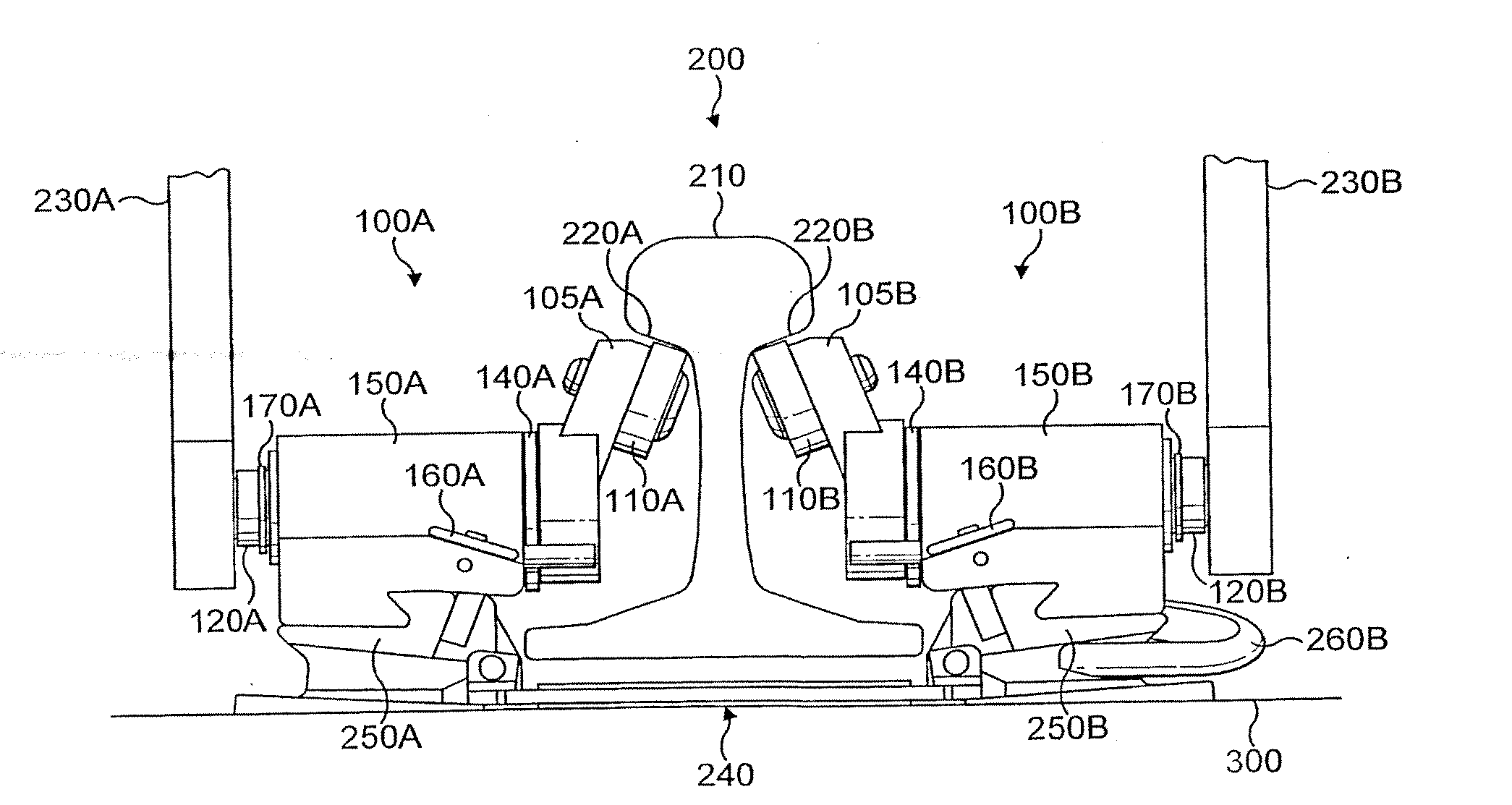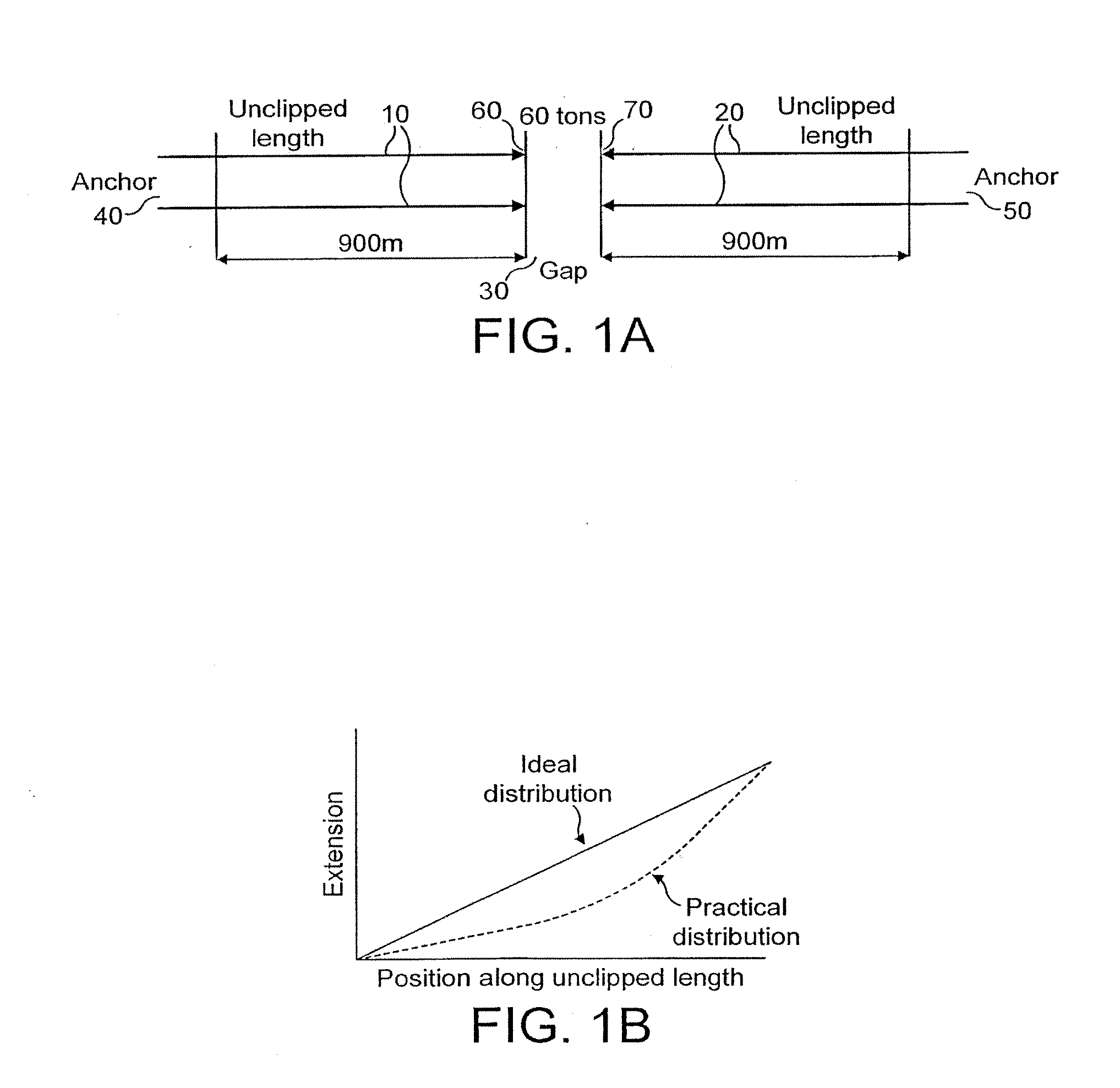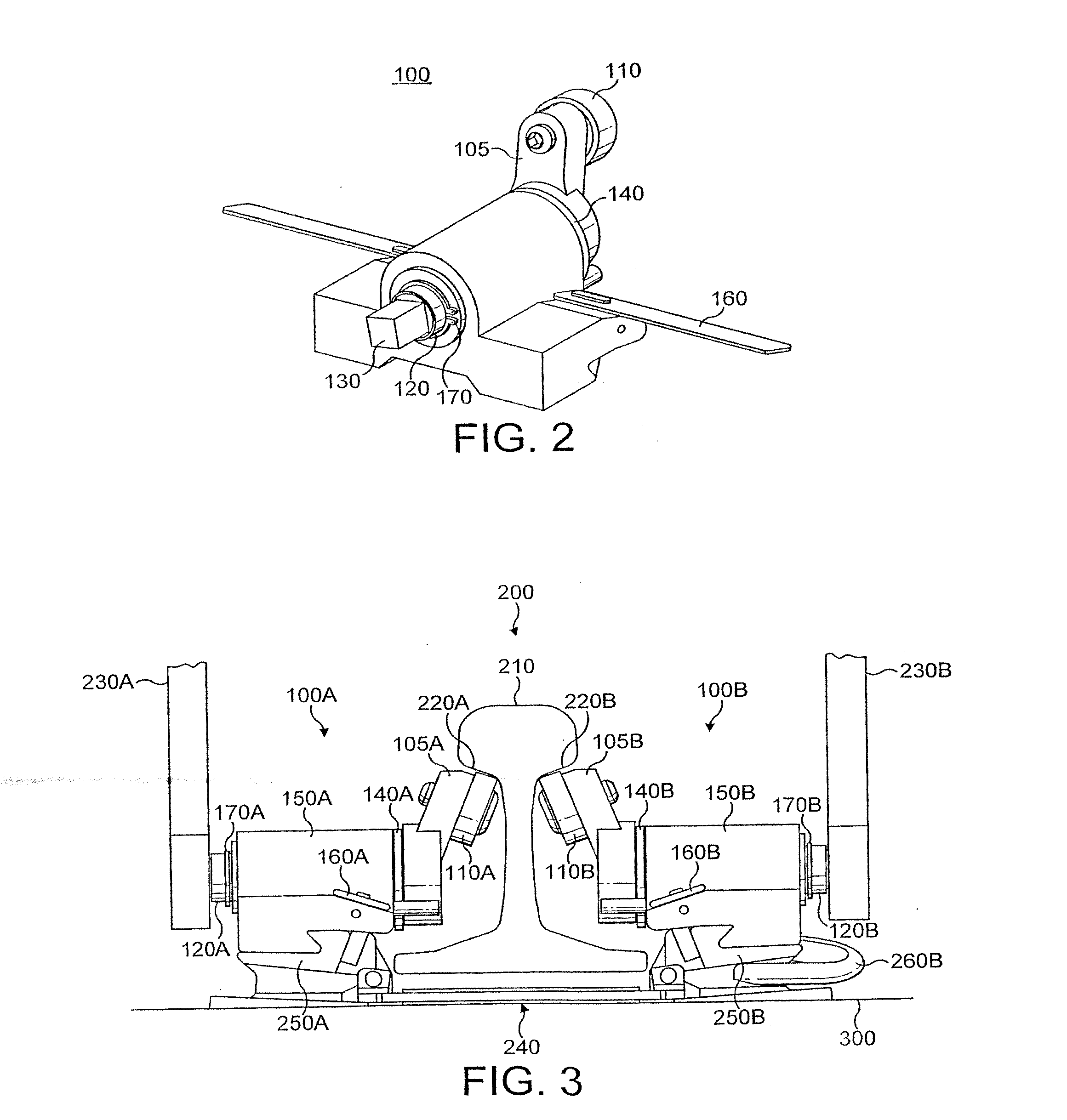Device, Method, and Apparatus for Lifting a Railway Rail
a technology for lifting and rails, applied in railway tracks, railway track construction, ways, etc., can solve the problems of unsuitable high-speed trains, most extension, and uneven rails, and achieve the effect of stabilising the rail, lifting and lowering process, and preventing lateral movement of the rail
- Summary
- Abstract
- Description
- Claims
- Application Information
AI Technical Summary
Benefits of technology
Problems solved by technology
Method used
Image
Examples
first embodiment
FIG. 2 of the accompanying drawings shows a device 100 according to the present invention. Device 100 comprises a lift arm 105, a roller comprising a bearing 110, a shaft 120, a spacer 140, a mount assembly 150, two locking handles 160, and a circlip 170.
The bearing 110 is rotatably mounted at a predetermined angle to one end of the arm 105. The arm 105 is coupled at its other end to one end of the shaft 120. The shaft is substantially housed within the mount assembly 150, preferably in at least one axial bearing (not shown), and / or with at least one thrust bearing (not shown).
Spacer 140 is located between the arm 105 and the mount assembly 150, so as to maintain a minimum distance between the arm 105 and the mount assembly. It is envisaged that spacer 140 is an optional component of device 100. Circlip 170 is located on a portion of the shaft 120 protruding out of the mount assembly 150 away from the arm 105. The shaft 120 is free to move axially within the mount assembly 150, but ...
third embodiment
FIG. 5 of the accompanying drawings shows a device 1100 according to the present invention. Device 1100 comprises a lift arm 1105, a roller comprising a bearing 1110, a bearing shaft 1300, a shaft 1120, a handle stub 1310, two bearings 1122 and 1124, a circlip 1170, a washer 1172, a mount assembly 1150, a carrying strap 1800, and securing means 2000.
Securing means 2000 comprises two locking fingers 2010 and 2020, two finger pins 2030 and 2040 (not shown), two finger spring pins 2032 and 2042 (not shown), a finger spring 2050, two bell cranks 2060 and 2070 (not shown), two washers 2080 and 2090 (not shown), two finger circlips 2100 and 2110 (not shown), push button 2120, and roll pin 2130.
The bearing 1110 is rotatably mounted onto bearing shaft 1300, which is itself mounted to one end of the arm 1105 such that bearing 1110 is mounted at a predetermined angle relative to the arm 1105. The arm 1105 is coupled at its other end to one end of the shaft 1120. The shaft is supported within ...
fourth embodiment
FIGS. 9 to 11 of the accompanying drawings show three perspective views of apparatus 3000 according to the present invention in different stages of use. Apparatus 3000 comprises two devices 1100A and 1100B, each substantially identical to the aforementioned device 1100.
In addition to apparatus 3000. FIGS. 9 to 11 show a rail 3210, and a rail fastening assembly 3240 which rests upon a sleeper 3300.
The reference numerals used in respect of device 1100, also apply to devices 1100A and 1100B, except with additional respective suffixes A and B. Accordingly, unnecessary duplicate description of those parts is omitted.
Turning firstly to FIG. 9, device 1100A is positioned in its working disposition on one rail fastener housing 3250A of the rail fastening assembly 3240. Similarly, device 1100B is positioned in its working disposition on the other rail fastener housing 3250B (not shown) of the rail fastening assembly 3240. A rail fastener 3260A remains within rail fastener housing 3250A in a ...
PUM
 Login to View More
Login to View More Abstract
Description
Claims
Application Information
 Login to View More
Login to View More - R&D
- Intellectual Property
- Life Sciences
- Materials
- Tech Scout
- Unparalleled Data Quality
- Higher Quality Content
- 60% Fewer Hallucinations
Browse by: Latest US Patents, China's latest patents, Technical Efficacy Thesaurus, Application Domain, Technology Topic, Popular Technical Reports.
© 2025 PatSnap. All rights reserved.Legal|Privacy policy|Modern Slavery Act Transparency Statement|Sitemap|About US| Contact US: help@patsnap.com



